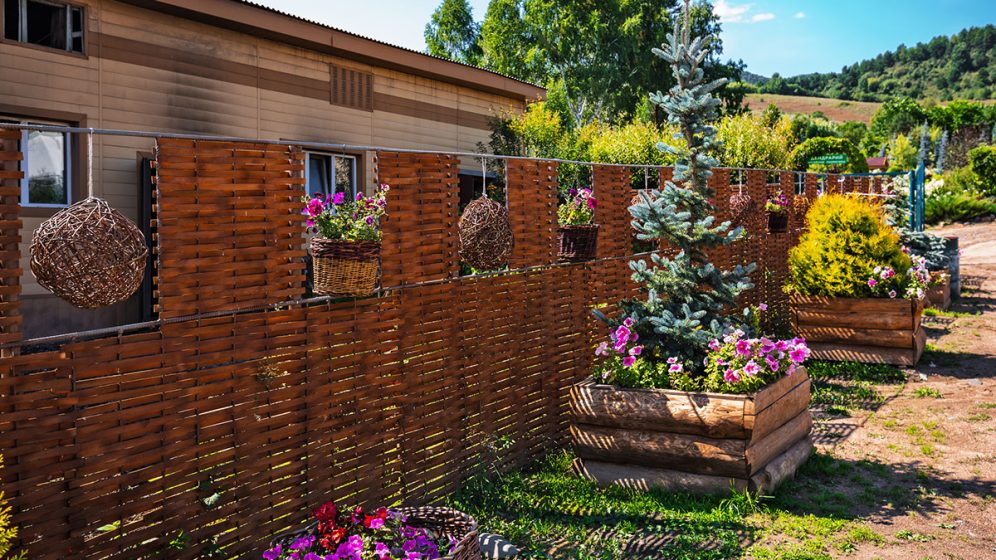
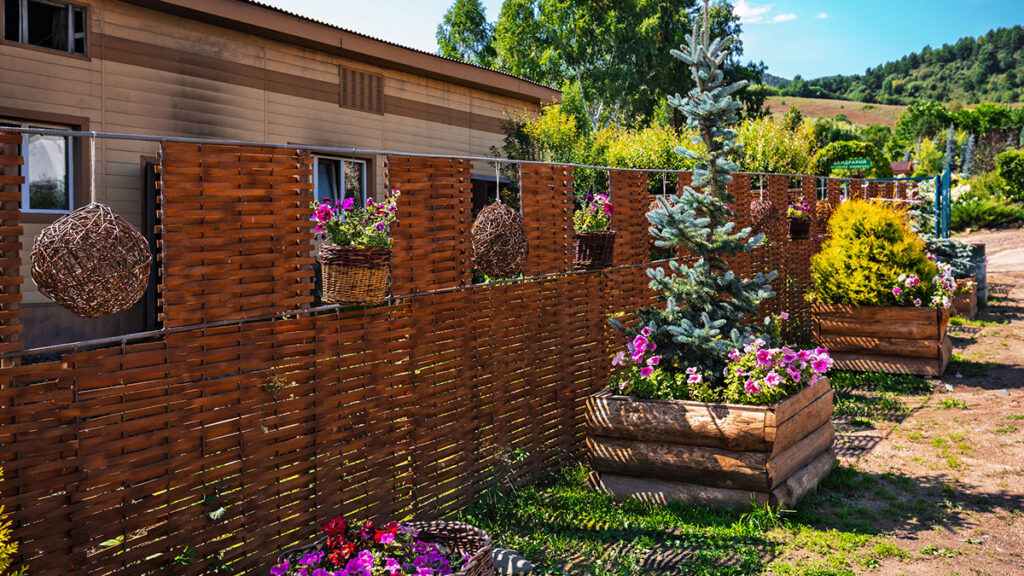
Preppers will spend small fortunes on home security systems and hidden cameras for their home in an effort to make them safer and more secure. The first step to home security should begin outside, however, with the land surrounding your house. In this article we’ll cover how to landscape for home security.
Home security is a multi-faceted subject. Cameras, dogs, firearms, Dakota Alert systems – these are all very important components of ensuring that your house stays safe. But landscaping is a more passive means of ensuring our home stays secure.
Landscaping for home defense requires a bit of sweat, but done right, it can also add beauty and value to your home. Done right, people won’t even realize that you designed your home to deter and defend against home invasions or peeping toms.
Following is my advice on landscaping, based on my experience of gardening and hobby farming, which has built my knowledge of plants and planting.
Know Your Grow Zone
The first step to successfully planting for home security is to know what will grow in your region. Thankfully, you don’t have to go it alone on figuring this out. A horde of gardeners before you have already studied and dealt with this problem.
Their solution? Dividing the United States into a few different gardening “zones.”
If you know what zone you live in, you can select plants that have been rated to flourish within your zone. That’s all there is to it. Zero guesswork is involved.
These zones are known as the “plant hardiness zones.” Go to the USDA’s Plant Hardiness Zone to find the zone where you live. All nurseries in your area will have employees on site who will know what will grow in your area and what will not, but realistically, if they’re selling plants in your area, odds are high they’ll grow well there.
If you’re buying online, however, somewhere within the plant description will be a listing of what zones to plant will grow in. That’s all you need to know. Armed with that knowledge, you can begin to find the right plants to make your home not only better looking, but more safe.
Know Your Soil
Your grow zone is the first step, but if you want to get deeper “into the weeds” on this, it may be helpful to know the quality of your soil. This could not only help determine which plants, shrubs, and trees are best suited to your land, but also what amendments you might need.
Sale  Luster Leaf 1602 Soil Test Kit, 20
Luster Leaf 1602 Soil Test Kit, 20
- Quick, at home results for Soil pH, Nitrogen, Phosphorous and Potash Innovative and inexpensive soil test kit features an easy-to-use capsule system and patented color comparators
- Contains all components needed for 20 tests. 5 for each of pH, N, P and K
This is made easy by online soil test kits.
How to Use “Home Security Plants” in Your Yard
Now that you know what zone you live in, what your soil is like, and what plants will actually grow on your property, you may be asking yourself how you are going to incorporate these plants into your landscaping without ending up with an amateurish disorganized chaos of a yard.
Here are a few basic landscaping principles that will help you to effectively protect your home via landscaping in a professional-looking manner.
Use the Big Nasty Looking Stuff at the Perimeter
Why would you want to plant something close to your house that isn’t aesthetically pleasing? For example, take blackberries. They are deciduous, losing their leaves in winter. When this happens, you end up with a host of barren, thorned canes. This looks like something out of a horror movie, not out of Southern Living magazine.
If the tree or bush is known for looking fierce, plant it out of sight where it will still serve a purpose but won’t do so at the expense of the beauty of your landscaping work.
Don’t Plant Things Close to Your House that Will Cause Problems
If you end up thinking a mesquite tree right next to your house is a good idea, think again. You’re going to end up with problems with your plumbing if you live in the city and potentially even problems with your foundation.
Likewise, don’t plant things that are going to harm people walking on your sidewalks. It’s okay to plant thorned bushes underneath your first story windows, such as Crown of Thorns, but if you line both sides of your sidewalk with Crown of Thorns, you’re only setting the stage for somebody to end up getting hurt should they slip on winter ice or get snagged by a wayward cane.
Odd Numbers Are Appealing
Familiarize yourself with art’s Rule of Thirds. This is the aesthetic law that there is inherent beauty aligned with what is known as The Golden Ratio. For our purposes here, the Golden Ratio is roughly 66%. When you have something that is 66% one thing and 33% another, you end up working within the bounds of The Golden Ratio, and thus, there will be greater beauty with what you’ve created.
The Golden Ratio is present in all art. You can see it in photography, paintings, sculptures, and even masterful landscaping.
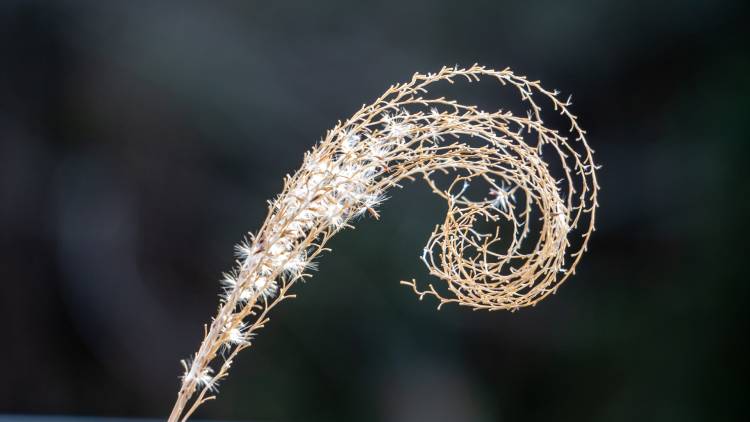 The Golden Ratio is a part of nature. Do you see how even in the small, the principle of two-thirds is incorporated?
The Golden Ratio is a part of nature. Do you see how even in the small, the principle of two-thirds is incorporated?
You may choose to incorporate this by having Knockout Roses underneath two first story windows with a trellised Crown of Thorns between them. This would add landscaped protection to your home (have fun climbing through a rose bush to get through a window) while simultaneously fulfilling the Rule of Thirds.
66% of the landscaping within that “micro-environment” of your landscape would be Knockout Roses, while the remaining 33% would be Crown of Thorns.
Keep the Tall Stuff in the Back
Generally, it looks better to have the tall stuff in the back and the short stuff in the front. There are exceptions to this rule, and don’t take this to mean that your landscaping needs to be a literal slope from your house down because it doesn’t.
You aren’t going to want to put holly bushes right along your sidewalk and Crown of Thorns, for instance, behind them. It looks silly. You end up with a bizarre “dead space” between the back of the tall holly and your home that way. It’s far better to plant the larger (in this case, the holly) closer to the house, and the smaller (the Crown of Thorns) further from the house, in front of the holly.
Understand the Concept of Framing
Sometimes, you can visually “steal” a landscape by framing it with landscaping. This focuses the eye on the scenery in the distance, making it look more grand, inviting, and majestic. You don’t always want to do this, but let’s say you have a mountain in the distance that you really want to draw peoples’ attention to, but don’t know the best way to do this.
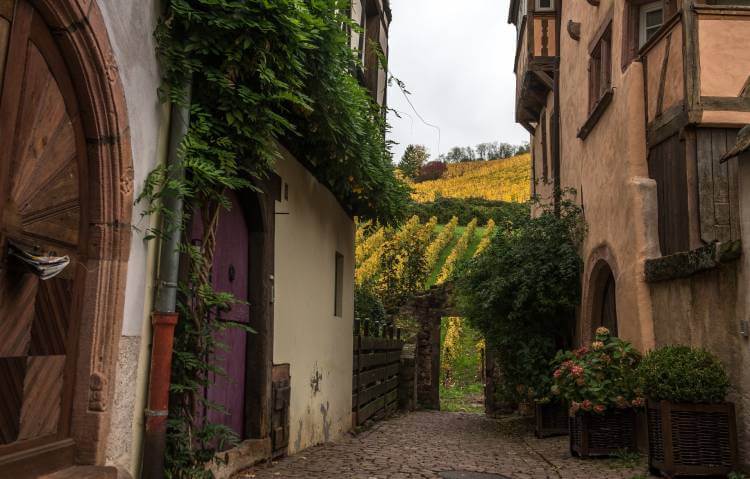 Do you see how the buildings here “frame” the vineyard in the distance? They invite you to discover what lay ahead, drawing you closer. The same can be done via landscaping.
Do you see how the buildings here “frame” the vineyard in the distance? They invite you to discover what lay ahead, drawing you closer. The same can be done via landscaping.
By framing the mountain with landscaping on each side of your view of the mountain, you help to “steal” the landscape so that people will automatically look towards it.
Sometimes people do this with trellises, arbors, trees, or tall bushes, but it’s all useful for generating beauty.
Consider Patterns
There is variety in nature, but there is also something of a pattern. If you were hiking through Appalachia, you would be surrounded by deciduous trees, the occasional pine, and green undergrowth. To find a cactus while you were out there would be bizarre. It just doesn’t fit the landscape.
Likewise, if you plant holly, firethorn, and Crown of Thorns in the landscaping close to your house, it would be strange to also have a barrel cactus. It just doesn’t fit. You want your landscaping to be a seamless transition – looking as if it was natural.
In other words, don’t force it. You’ll end up with a bizarre hodge-podge otherwise, looking as if you were incapable of making up your mind when at the local nursery.
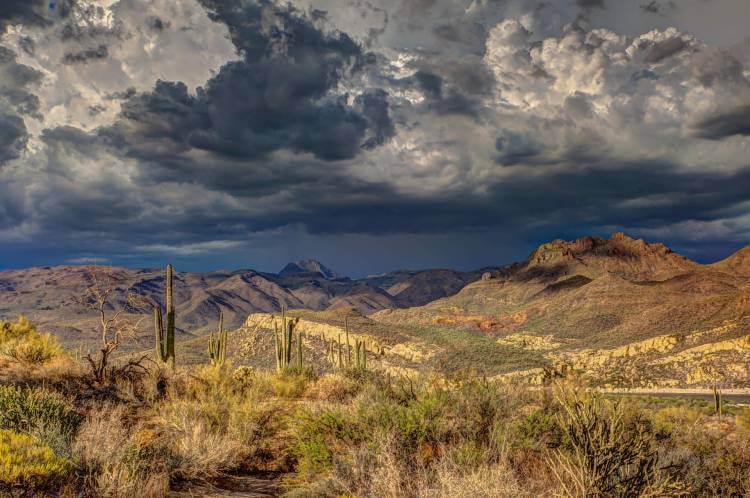 Everything within this landscape looks as if it should be there. Would it look natural with a single oak tree growing in the middle? No? Then why do the same at your house? Make your landscape fit your landscape.
Everything within this landscape looks as if it should be there. Would it look natural with a single oak tree growing in the middle? No? Then why do the same at your house? Make your landscape fit your landscape.
Plan for Growth
Too many people make the mistake of not taking future growth into account with their landscaping. They end up with a mess as a result. It’s okay if things look too spaced out the first year or two after planting. They’re babies. They’re going to be little.
Give those same plants time, though, and you’ll soon end up with a mature plant – much larger than the little baby that was planted. That’s what you’re concerned about – how your landscaping looks when everything is mature – not how it looks immediately after you planted everything.
You want things to be still airy at that point, without everything looking as if it is being squished together by a giant, invisible rubber band.
You Direct the Movement
This is the great thing about home security landscaping – you get to direct the flow of movement around your property. If you don’t want anybody to be able to access your property from the western wood line, there are plants you can put there to keep anybody from doing so. Don’t want people under your windows? There are plants you can put there to keep people from doing so.
Want to guide people towards certain parts of your house where you have security cameras? Again, you can use home security landscaping to do this.
Curves Are Natural. Lines Are Not.
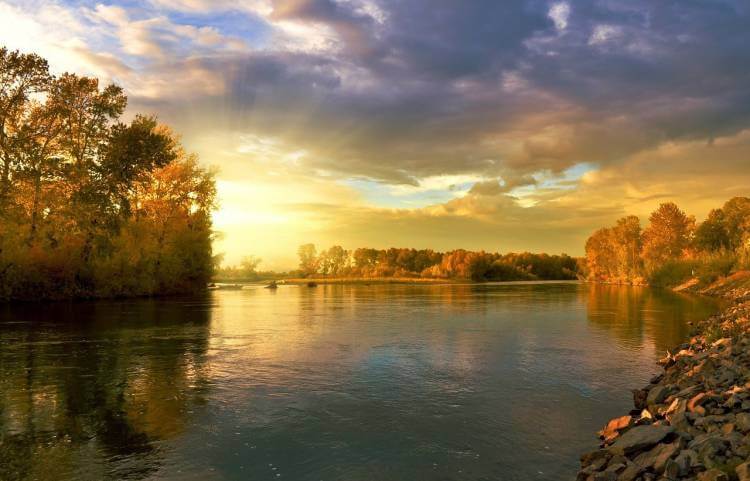 Do you see how the terrain curves here? How it invites you to discover? Curves are what helps to accomplish this.
Do you see how the terrain curves here? How it invites you to discover? Curves are what helps to accomplish this.
Within nature curves are natural. Lines are manmade. There is inherent beauty to the curve. Part of this may stem from The Golden Ratio – a third is high and two thirds are low.
By incorporating curves into your landscaping, you will help to foster the idea that everything just grew that way naturally. It lends itself to whimsy, adventure, and wonder. If your landscaping is a series of geometric shapes, you don’t end up with that, you end up with something robotic and forced.
To the best of your ability, try to incorporate a natural sense of flow throughout your landscaping via curves.
29 Plants that Work Great for Home Security
Armed with the knowledge of what zone you live in you’ll be ready to begin “plant shopping.” Below are what we believe to be some of the best plants for home security landscaping.
1) Agave (A. Americana)
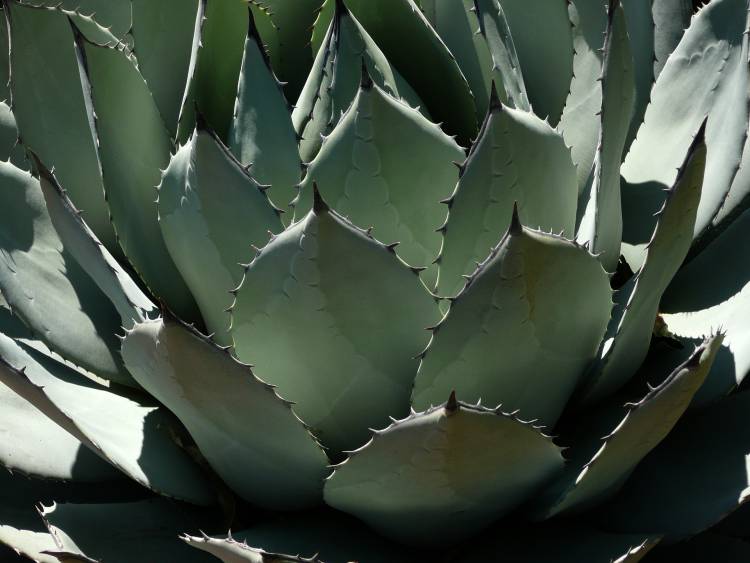
- Zones 8-11
- Height: 3-6’
- Spread: 6-8’
This plant with its thick, fleshy leaves looks somewhat like a massive aloe vera. It’s the massive spikes at the end of each leaf that make this such a great choice for home security landscaping, however. They are no joke, and if you catch them just right, they will easily pierce your skin deep.
While just one of these plants can be easily avoided by a criminal, when they are laced together, or added with other “security” landscaping choices, they serve as quite a formidable deterrent.
These plants are native to both Mexico and the desert regions of Texas, so they serve for great choices for areas with plenty of scorching sun and little rain. Where they don’t serve so well is in areas where little kids are likely to be playing hide-and-seek.
Seriously, these aren’t masses of thorns that will just poke a hand and warn somebody away. These are spikes that will seriously injure or blind without any fair warning to a child.
2) Apple Cactus (C. peruvianus)
- Zones 8-11
- Height: Up to 82’
- Spread: 8” per column
Being cacti, these plants enjoy full sun and need soil that will drain easily. “Plants” may not be the proper term here, as that seems to give the connotation of something that could be grown out of a pot. The apple cactus can grow as large as a tree. (You can grow these in a pot, but it just doesn’t feel right. It’s like caging a hawk.)
It’s known for its incredibly rare flowers, delicious red fruits, and, of course, its sharp spines. The apple cactus is covered with them, and nobody is going to want to get anywhere near them. If you’re looking for a skyscraper of a deterrent and live in a desert environment with little water, this is it.
3) Barberry (B. thunbergia/B. julianae)
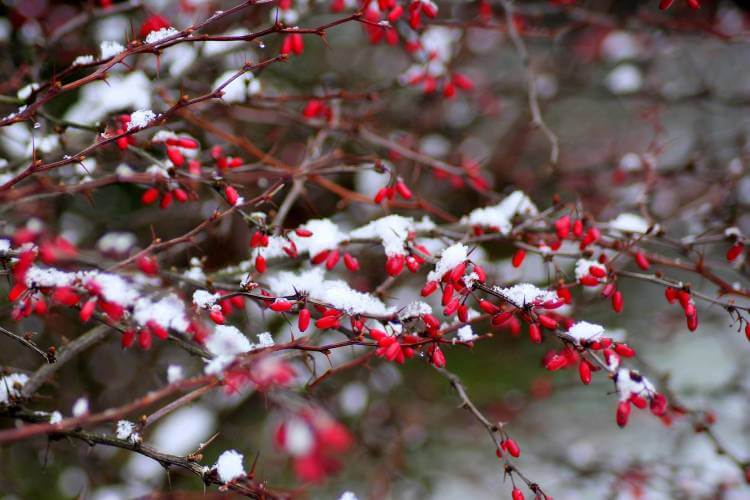
- Zones 4-8
- Height: 3-6’
- Spread: 3-6’
Barberry is a like a retired old soldier: its hardy, prickly, and doesn’t really care where it’s at as long as there’s food.
There are a lot of varieties of barberry out there, but you need to make sure that you choose one that has thorns. If you do, you can create a living, thorny hedge that will keep out just about everything. By planting several of these where they will be able to interlace as they grow up, you’ll have “built” yourself a wall without ever having to have called a mason.
Be mindful that many types of barberries are invasive (and potentially illegal) where you live, however. If you pick a Concorde Japanese barberry, the seed is dysfunctional, and you won’t have to worry about the plant spreading as a result.
4) Barrel Cactus (Echinocactus/Ferrocactus)
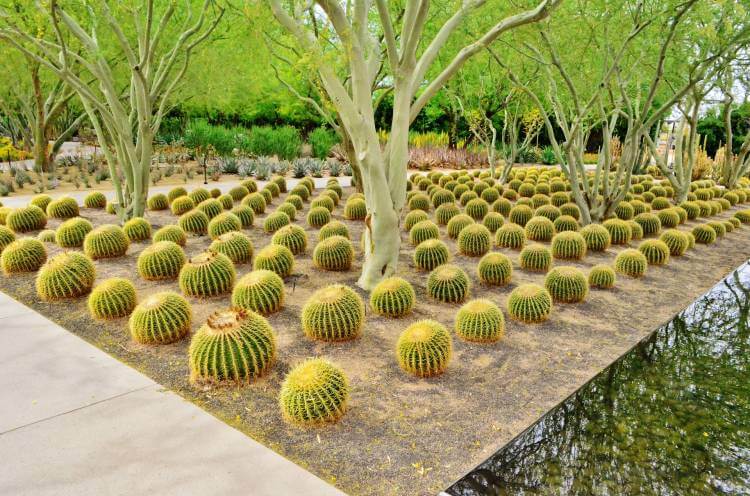
- Zones 9-11
- Height: 3-10’
- Spread: 2’
Lovingly also known as the mother-in-law’s seat, there are a wide variety of barrel cacti out there. While the Echinocactus genus are known for their fuzzy spikes, the Ferrocactus genus are a bit fiercer to look at.
If you live in an arid area with little rainfall and little frost, this can serve as a great plant to add to your landscaping close to the home to help form an impenetrable shield when combined with other larger and wider-spreading plants.
5) Blackberry (R. fruticosus)
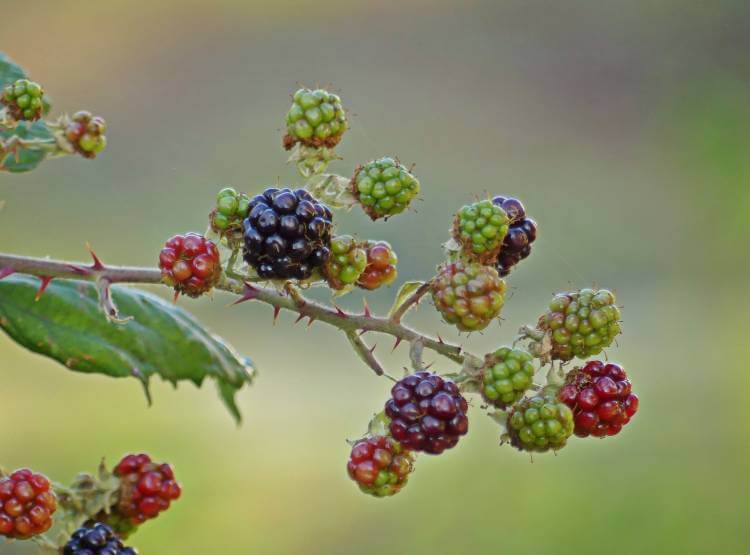
- Zones 5-11
- Height: 5’
- Spread: 5’ if the canes fall over
If you’ve spent much time in The South at all, you know that blackberries commonly form an impenetrable mess of canes along forest edges. One mountain near me is laced with so many intertwining brambles that it is literally impossible to step off the hiking trail through the area.
This feature can be used to your advantage within a landscaping setting. The only catch is that blackberries can easily become rather invasive – they very much like to spread, are difficult to get rid of, and may not spread where you would like them to appear.
Where blackberries excel is along the wood line. If you have woods nearby your house, consider planting canes along the edges. They will quickly spread to form dense thickets where they are planted. Make sure that you plant a variant with thorns as well. There are a few thornless varieties out there that make for easier blackberry picking, but for terrible home security choices.
Also, try to keep these away from right beside your home. Their spindly appearance isn’t becoming next to a house, and they will soon begin to grow underneath your deck, steps, porch, and in other areas they are unwelcome.
6) Blackthorn (P. spinosa)
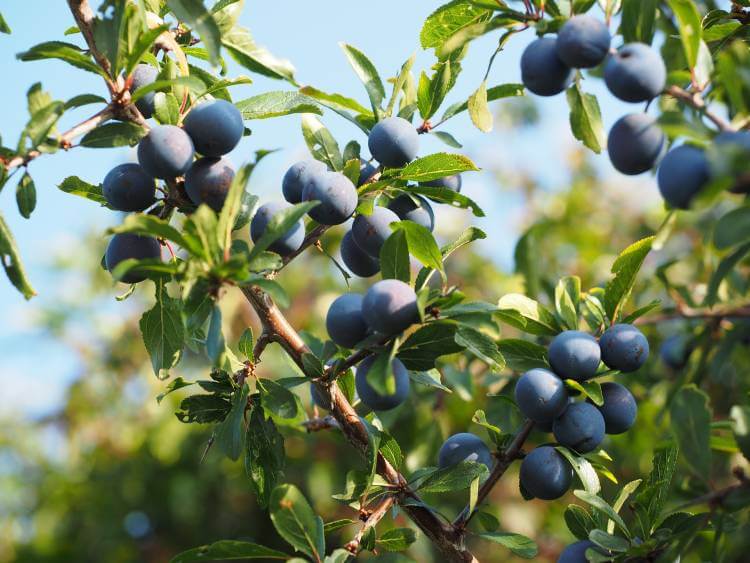
- Zones 4-8
- Height: up to 10’
- Spread: 12’
Aside from being an excellent name for an acid rock band, blackthorn also serves as a potent deterrent. This plant is covered in 2” long spikes that seem intent on causing injury and infection. That’s part of what makes this plant so serious. It not only wants to hurt you, it wants to call you names as well.
The tips of these spikes like to penetrate skin and then break off. The bad guy then can easily end up with an infection if they aren’t willing to do the digging/probing necessary to dig this pleasant little piece of flora out of them.
When you plant this, you’re going to want to do it somewhere along your perimeter to funnel access to your property in a manner that creates something of a hedge (e.g., plant several so they’ll intertwine).
This is a deciduous bush that doesn’t really need a lot of care or maintenance (other than regular water), but it doesn’t look very pretty after it loses all its leaves, and unless you want your house to have distinct haunted vibes every fall, we recommend planting it further out, perhaps to keep people from sneaking through a particular patch of your property you can’t see from your house.
7) Bougainvillea (B. glabra/B. spectabilis)

- Zones 9+
- Height: Up to 39’
- Spread: Up to 30’
This thorny vine is known for its gorgeous flowers that can be found in a wide variety of colors (it depends on the variant). When grown nearby several other members of its species, these plants will quickly grow to form an impenetrable, thorny mass reminiscent of the hedges of World War 2 France.
However, keep in mind that there are a wide variety of bougainvillea available on the market. Not all of them will grow to the size listed above, and there are dwarf versions available as well.
To keep this plant happy, you need to make sure that it has plenty of water and very well-draining soil. If you want to see the flowers as well, you need to make sure that the plant isn’t exposed to long periods of bitter cold. If you live in a more northern climate, this plant will not do well.
8) California Fuchsia (R. speciosum)
- Zones 8-10
- Height: 2-9’
- Spread: 2-3’
This small, deciduous shrub enjoys full to partial sun in soil with good drainage. Don’t worry about having to water these little guys very much as they’re very drought-resistant and don’t take buckets of water to survive.
Three-inch-long thorns will be scattered throughout the growth, and if you pinch back the young tips after the plant becomes established, you’ll end up with a much bushier plant in your landscaping. With a series of these placed relatively close together, you can grow a rather formidable hedge that will keep both bad guys and animals at bay.
9) Chinese Jujube (Z. jujuba)
- Zones 5-11
- Height: 15-40’
- Spread: 20-30’
Nope, this isn’t a disgusting little pill candy. This is a big ol’ spiky Chinese tree. Well, the thorny variants, anyway. If you end up with a thorny variant, you’ll have a tree on your hands also known as the Chinese pear, that will not only deter criminals but put out an edible Asian fruit for you to enjoy.
They prefer sandy, well-drained soil, tolerate an impressive array of temperatures, and pump out up to 100 pounds of fruit a year.
It’s a relatively easy-to-grow tree that likes full sun and well-drained soil, but you’re going to want to prune it regularly or it won’t put out new spiky growth.
10) Cholla cactus (C. bigelovii)

- Zones 8+
- Height: 5-15’
- Spread: 4’
Native to Mexico, these big fuzzy cacti are coated in spikes. If you brush up against one of these cacti, you’ll end up with a swarm of miniscule spikes embedded within your flesh. These spikes stick into people so easily, that the cactus has another nickname: the jumping cactus. Why? Because the spines seem to jump out to get people.
These plants require minimal maintenance, but they are incredibly slow growing. If you need strong security today, these aren’t likely to be your best choice. Likewise, being cacti, if you live in an area that gets buckets of rain on a regular basis, the cholla cactus is not a good choice. With too much water, these will end up rotting.
11) Crown of Thorns (E. milii)
- Zones 9-11
- Height: 6’
- Spread: 1-2’
Tradition has it that Crown of Thorns is the plant that was used to create the crown of thorns that Jesus Christ had shoved upon his head.
It’s a nightmarish looking plant with branches that are covered in large stiff thorns. As an evergreen, you won’t have to worry about it looking barren in the winter, but you do need to be careful if you go about pruning this: its sap can cause skin irritation.
If you don’t overwater it and keep it in well-drained soil this plant should be happy. It enjoys full sun and is very hardy.
12) Desert Spoons (D. wheeleri)
- Zones 8-11
- Height: 4-6’
- Spread: 3-4’
They grow in the desert, but they look nothing like spoons. Well, unless, perhaps, you are a member of the Adams Family. For the rest of us, desert spoons like a sea urchin at a punk rock concert.
These spiky plants are reminiscent of agave, and native to the arid regions of the United States. As expected, they like sandy soil that drains easily. Why these spoons work for defending your home is because of their teeth. Brush up against one of these leaves and you’ll end up getting bit.
Perhaps the coolest thing about these plants is that they don’t begin to flower until they’re 7-10 years old. Once that happens, you’ll be granted a glimpse of either a yellow flower or a purple-pink one.
13) Devil’s Walking Stick (A. spinosa)
- Zones 4-9
- Height: 20’
- Spread: 10-20’
A rather wicked looking tree, this is also goes by the moniker of the Hercules club or the prickly ash. Very large thorns absolutely cover this tree, even on the trunk. It’s native to the Eastern United States and is a good choice when you need protective landscaping in a hurry as it’s a very fast grower.
You aren’t going to want to plant this anywhere close to your house, however. It is going to spread after you plant it, and you don’t want this taking over your sidewalk. In nature, you’ll commonly find this plant right along the edge of the forest. It enjoys either full or part sun, doesn’t enjoy strong wind, and can be turned into something of a large bush if you prune it regularly.
14) Giant Rhubarb (G. manicata)
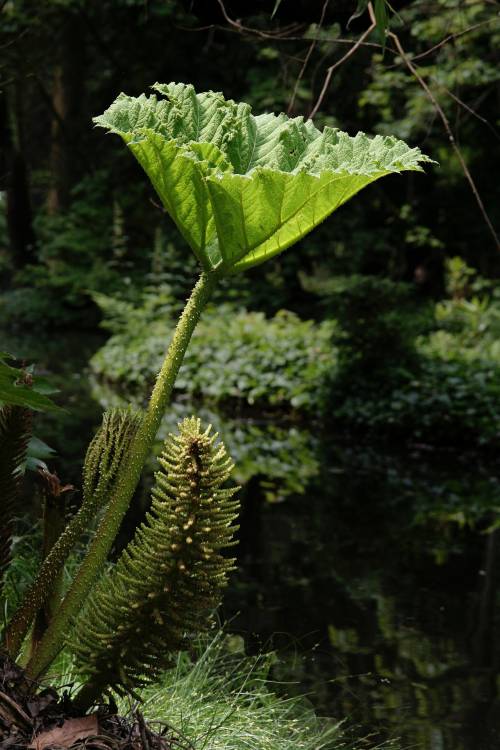
- Zones 7-10
- Height: 8’
- Spread: 12’
If you live in a tropical region of the United States that gets plenty of rainfall and has very rich soil, you may want to consider the unique looking giant rhubarb. The leaves on this plant are gargantuan, with a single leaf often being the size of a full-grown man.
And it’s those very leaves that help to form a barrier. If anybody attempts to crawl underneath of them, they’ll be accosted by millions of tiny little spines which adorn the stalks and veins of these plants. They’re not the most painful of spikes, but they do discourage exploration.
Make sure you plant this in an area with plenty of sun, or else they won’t be happy.
15) Gooseberry (R. hirtellum/R. uva-crispa)
- Zones 3-8
- Height: 3-4’
- Spread: 3-4’
Known for the berries widely sought after for pies and jellies, gooseberries are also a plant coated in thin, little thorns. They really don’t require much work at all to maintain, but if you go about pruning or picking berries, you’re going to have a much happier time wearing long sleeves and gloves. Go about picking your gooseberries in much the same way you would blackberries – they both grow on canes, and both have thorns.
These plants enjoy full or partial shade and aren’t huge fans of scorching temperatures. If your home gets rain once a week or so, your gooseberries will be well-watered as well.
If you live in an area where there are lots of white pines, you may want to check your local laws before you purchase any goose berry plants. For whatever reason, these plants contribute to a disease called white pine blister rust that kills white pines.
16) Hardy Orange (P. trifoliata)
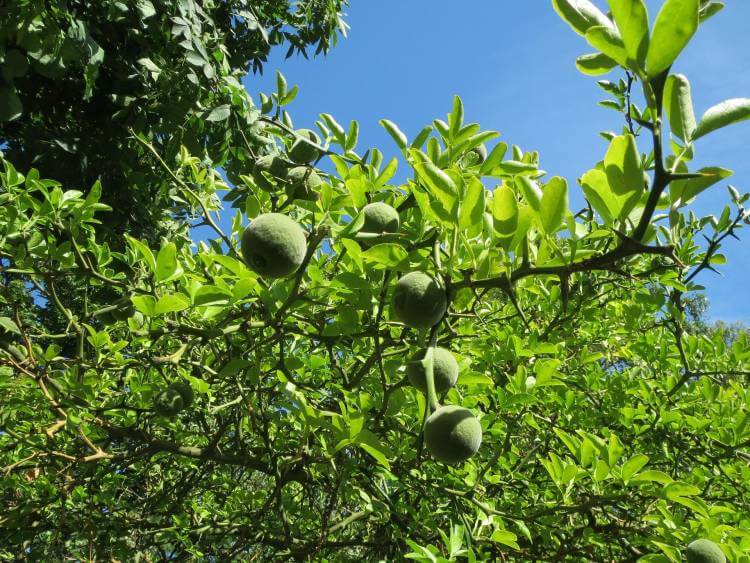
- Zones 6 and up
- Height: 20’
- Spread: 6-15’
Also known as the trifoliate orange, this Chinese native produces a crop of little lemon-looking sour fruits. It’s commonly planted as an ornamental, but aside from its aesthetic purposes, this tree is also coated in 2” thorns on every branch.
This will lose its leaves in the wintertime, so understand this before you plant it close to your house if that’s an issue for you, but it is well worth your consideration.
The tree is drought-resistant, does well in high temperatures, accommodates full sun, and can be interplanted with other hardy oranges to create a very stiff hedge.
17) Holly (I. aquifolium)
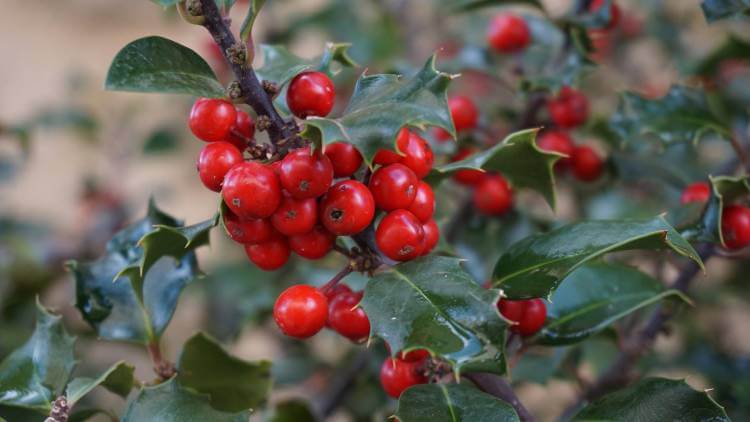
- Zones 5-9
- Height 10-50’
- Spread: 18-40’
Commonly recognized as a home security plant, this Christmastime tradition is bristling with stiff leaves filled with sharp points. They grow rapidly, tolerate full sun/partial shade well, don’t need a lot of water, and send out more striplings with ease.
Once you plant holly, you will have a nightmare of a time getting rid of it. The roots run deep and even if you hook a chain to your truck, you still will not be able to pull it out.
While not fun to rest against, if somebody is wearing jeans and a winter coat, they can push through a hedge of this stuff. It won’t be comfortable, but it is possible, and this is something you should be aware of.
If you’re looking for an evergreen form of barrier for close to the house that will deter the less aggressive criminals, however, holly may be a good choice.
18) Honey Locust (G. triacanthos)
- Zones 3-8
- Height: 90’
- Spread: 30+’
Bits and pieces of locust trees can be found throughout old farms in the US due to their making excellent rot-resistant fence posts. These trees grow very large, very quickly, and probably aren’t something you’re going to want to plant anywhere near your house – they make an absolute mess.
Every fall, they’ll drop thousands of unsightly seed pods everywhere. Unless you like hanging out outside with a rake, keep them on the border. They do possess a golden yellow leaf during autumn however, which is gorgeous.
They also possess thorns. Lots and lots of thorns. And as any child growing up in an area native to the honey locust can attest to, you often don’t see the thorns until it’s too late. And when it’s too late, it’s too late, because these thorns are massive. They can be up to 8” long. Again, as many kids have unwittingly discovered, these don’t make good climbing trees.
That makes for a good feature when it comes to home security landscaping, however. A thick copse of these trees is very uninviting and seeing that they are both drought and heat resistant, you’ll have no problem keeping this thorny mess alive even if you don’t have a green thumb.
19) Japanese Quince (C. japonica)
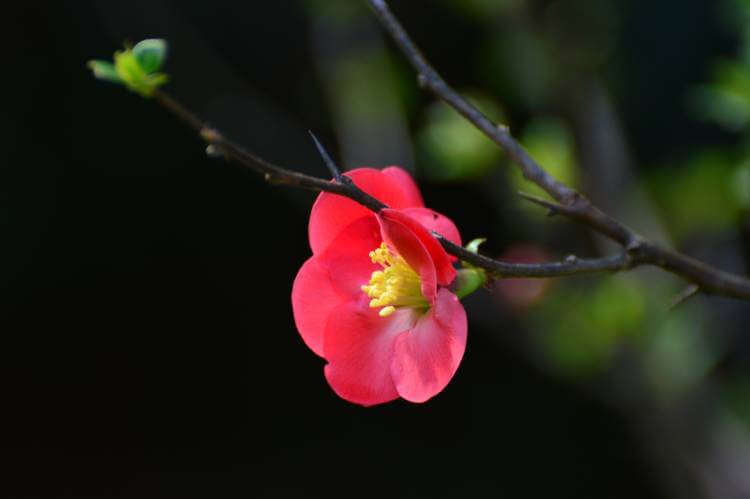
- Zones 5-9
- Height: 6’
- Width: 6’
This little Asian thorny shrub will do just fine helping to improve the aesthetics of your home while also keeping criminals away from your windows. It doesn’t grow super tall, it doesn’t spread like a weed, and it doesn’t look like something from a horror movie.
It does lose all its leaves in the wintertime, but when it does it still looks like a bush – not a scraggly bunch of blackberry canes.
Many people use this to create a thorn-filled hedge with and even train these to climb trellisis, and its bright orange flowers are known for bringing in pollinators. The hardiness of this plant, with its ability to accommodate a wide range of growing conditions, including drought, help to make this plant an excellent choice for close-to-home landscaping.
20) Knockout Roses (Rosa)
- Zones 4+
- Height: 4’
- Spread: 3-4’
Roses are known for two things: their iconic flowers and their thorns. Every rose has its thorns, and it’s because of this that many people consider adding these to their landscaping to deter would-be criminals.
The problem is that many varieties of roses can be somewhat spindly. If a thief can simply walk around a stick in the ground with a pretty flower on top, it’s not doing much for home security.
This author prefers Knockout Roses, as a result. This is a large bush full of thorns that grows easily and puts out beautiful pink flowers constantly. Several areas around town in my vicinity use Knockout Roses as a living hedge to keep people on sidewalks, and they serve their job admirably.
They’re drought resistant, disease resistant, and about as tough of a plant as you can get. The flowers are stunning to boot.
21) Mesquite (P. glandulosa/P. velutina)
- Zones 7-9
- Height: 30’
- Spread: Up to 40’
Not only can you smoke pork with this tree, but you can smoke criminals as well! This tree is also known as the devil tree for good reason: it’s not exactly the most tree-hugger friendly of trees. It’s a mass of thorns that won’t let you get anywhere near the thing without the risk of serious pain.
It can be potentially invasive, so you need to keep it away from close to your house, but if you need a tree that will deter criminals for your windbreak or whatnot, this may be a solution to turn to.
Also, keep in mind that the reason this is also known as the devil tree is because the roots will pull all the water away from the other plants in the area, killing them. So, don’t plant this near other landscaping that you’ve put a lot of time and money into.
If you need a tree for a arid, dry area along the border of your property where not a lot of light reaches, this may be a choice to consider.
22) Ocotillo
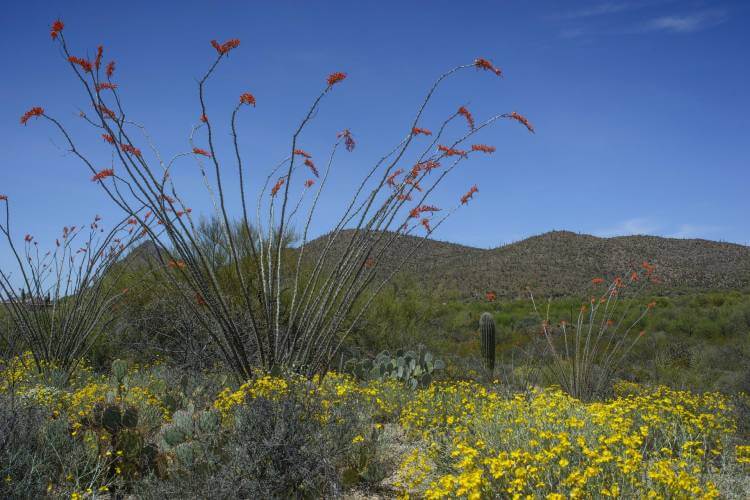
- Zones 1-7
- Height: 20’
- Spread: 15’
This bizarre plant has as many names as it does spines. Called vine cactus, coachwhip, and a myriad of other names, this is a large collection of whip-like canes coated in spikes. It’s native to the arid regions of North America, needing
It takes quite a bit of time to become large, but if you plant several of these so that they will interlace with each other, or place one near your window, you’ll end up with a rather formidable barrier that nobody without a machete is going to want to get anywhere near.
23) Oregon Grape (M. aquifolium)
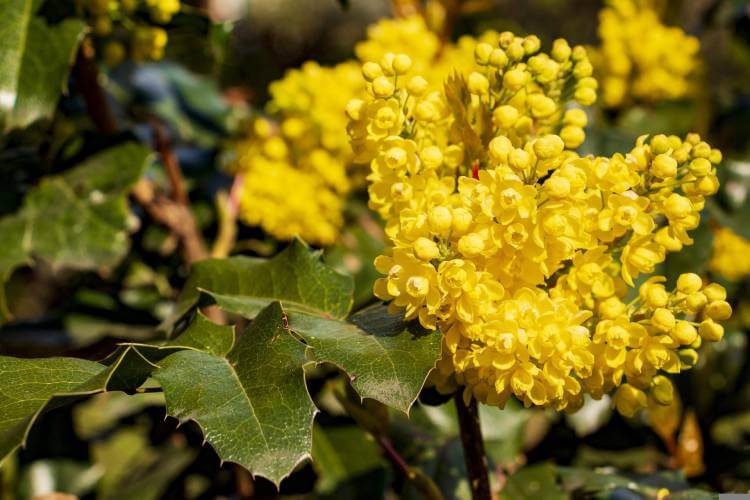
- Zones 5-8
- Height: 3-6’
- Spread: 2-5’
This evergreen bush is native to the Oregon region and gets the name “grape” from the small, edible berries (they’re called ‘sloes’) that lace its branches during late summer. It puts out yellow flowers during the spring, but you’ll have to wait till early fall for the sloes.
The thorns are ever-present, however. If you try to tangle with this bush, you’re only going to end up getting your butt handed to you on a platter.
To see your Oregon grapes thrive, make sure that you plant them out of full sun exposure. It’s something of a vampire in that regard. Also, make sure that you have well-drained soil. If you do that, you’ll have a great, pretty-to-look-at bush for landscaping close to your house.
24) Porcupine tomato (S. pyracanthos)
- Zones 9-11
- Height: 4’
- Width 3’
If you’re looking for a piece of landscaping that won’t just surprise the bad guy with thorns he won’t feel until the last minute, but that has thorns that will visibly scare him away, the porcupine tomato is where you’ll want to turn.
This is probably one of the most wicked looking plants in existence. A small evergreen bush native to Madagascar, the porcupine tomato possesses the vivid colors that dangerous tropical creatures are known for. Beautiful purple flowers grow on this plant covered in leaves laced with orange. But the catch?
Each leaf has massive spikes growing out of it. The plant just looks scary.
If you live somewhere that doesn’t get hit by frost, gets plenty of rain, and where you can give a plant well-draining soil in full sun, you’ll have a winner with the porcupine tomato.
25) Prickly Pear (Opuntia)

- Zones 4-11
- Height: 6-8’
- Spread: 2-4’
A common piece of landscaping throughout the United States, the prickly pear is a cactus that has well-earned its title as a veritable piece of home security landscaping. Not only do you get the stock cacti spines that are associated with these types of plants, but you also get very fine hair-like spines called glochids that can cause just as much pain.
Glochids barely require you to even brush against the prickly pear for them to break off of the plant and embed themselves into your skin. And unless you have a nearby pair of tweezers, you’re going to have a next-to-impossible time trying to pull these out with your bare fingers.
Like all cacti, the prickly pear needs full sun and well-drained soil to excel, though the author has seen them thriving in clay soils around his home. As expected, the prickly pear needs full sun to thrive.
26) Pyracantha (P. angustifolia/P. cocchinea)
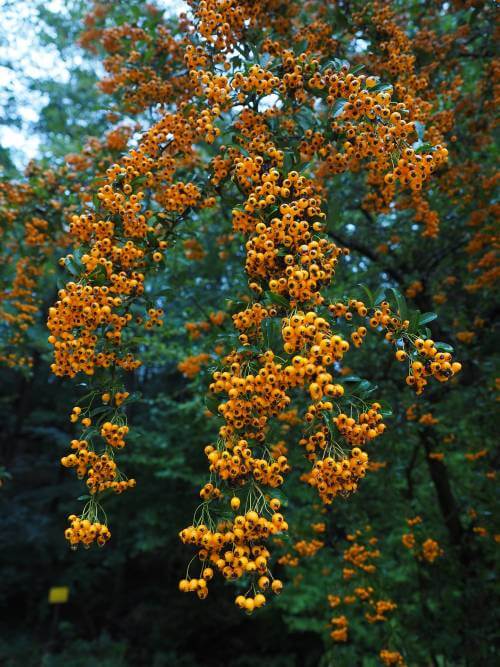
- Zones 6-9
- Height 4-6’
- Spread: 6-12’
Also known as firethorn, this evergreen bush is the more potent version of holly. Like holly, it grows to form a very dense hedge, has red berries during the colder months, and doesn’t require much maintenance at all, but unlike holly, firethorn is covered with massive thorns that will not let anybody push through the mass of green.
And if you like, you can train firethorn to climb. If you have a fence that came with your property you don’t feel offers an adequate level of protection to your property, setting firethorn nearby it and training it to climb the fence may be a solution.
Plant them in either full or partial sun and in soil that is well-drained.
27) Silk Floss Tree (C. speciosa)
- Zone 9-11
- Height: 50’
- Spread: 50’
While native to the tropics of South America, this tree can be found in other parts of the world as an ornamental for its hibiscus styled flowers and quirky cottony seed pods. How is this beneficial for home security landscaping?
Every inch of the trunk and branches is covered in spines. If you need a tree to make your landscaping come together, but don’t want something that somebody will be able to climb on, this is it.
You’ll end up with a tree that looks like a fat girl squeezed into a tiny dress, but it is a great choice when kept some distance away from the home where you need a barrier on the ground but falling organic matter won’t mess anything up (e.g., seeds and silk).
To have success with this tree, you need to put it in an area with full sun, well-drained soil, and with plenty of space to grow. It will grow 2’ a year and has a substantial water need until it is established. Don’t even think of planting this somewhere where temperatures drop below 20 degrees Fahrenheit either. If you do so, your tree will die.
If you live somewhere like Florida, however, this can make for a sci-fi like addition to your landscaping.
28) Washington Hawthorn (C. phaenopyrum)
- Zones 3-8
- Height: 25’
- Spread: 20’
This makes for a firework-like display during autumn, when the green leaves of this tree turn orange, red, and purple. Small, colorful berries further add to the aesthetic appeal of this ornamented plant. And to keep bad guys away? It’s coated in good-sized thorns throughout its branches.
When planting Washington hawthorn, be aware that it needs full sun and well-draining soil to thrive. You’ll have to give it plenty of water until it becomes established, but once that is done, it doesn’t need as much.
Like all hawthorns, the Washington hawthorn is susceptible to several damaging insects and diseases, so this is something you need to keep in mind if you’re going to include it within your landscaping. You’ll want to keep an eye on it so you can nip any potential problems in the bud.
29) Yucca
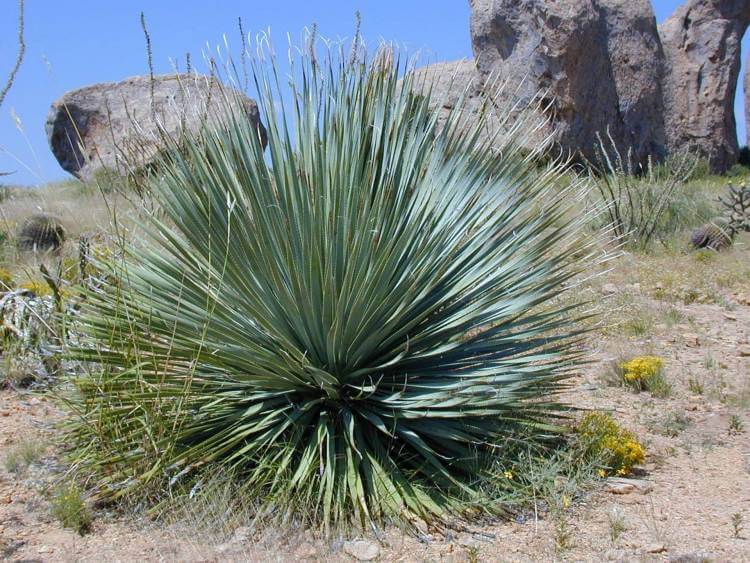
- Zones 8-11
- Height: Up to 20’
- Spread: 3’
Despite its name, this plant isn’t yucky to look at at all. It’s native to the arid regions of the United States, and therefore likes full sun and well-draining soil. If you’re familiar with the look of agave, yucca is reminiscent of that: large leaves that want to hurt you.
The edges of these leaves are very sharp and can easily cut exposed skin. Make sure that you are certain that you want your yucca where you plant it as well, because once you put it in the ground, like a holly, you’re going to have a very hard time of getting rid of all of it.
A Few Foundational Premises of Home Security Landscaping
Light it Up
Motion lights are a well-known home security device. They go dark unless they’re set off. Convenient!
A more subtle, albeit time-limited way to light up your yard, and walkways in particular, is to use solar path lights. Their small solar panels allow them to charge up during the day enough to emit a soft glow through the early hours of the evening.
 Home Zone Security Outdoor Landscape & Garden Decorative Solar Path Light (8-Set)
Home Zone Security Outdoor Landscape & Garden Decorative Solar Path Light (8-Set)
- SOLAR POWERED: Let the sun do the work with solar outdoor pathway lights from Home Zone Security featuring long lasting white LED lights recharged by the sun to upgrade your home landscape with elegant accent lighting
- BUILT TO LAST: Built with durable ABS plastic with decorative housing for beautiful lighting effect along your pathway
They are not home security lights per se, but they are an attractive lighting option that adds yet one more layer of protection to the immediate area surrounding your home.
No Trellises Under Your Windows
A trellis is easily used by a thief as a ladder. Sure, they look pretty, but if we’re taking a deep look at the landscaping around our house with the intentions of boosting our security, we need to look at things with a different eye. We’re interested in beauty, but we’re also interested in safety. We want to perfectly enmesh both together.
The only potential exception to this rule would be if you had a thorny nightmare of a plant climbing throughout that entire trellis. You must keep your body pretty close to a ladder in order to climb it, and the same goes for a trellis.
If a mass of thorns was right where somebody needed to put their hands and drag their body, they wouldn’t be able to climb the trellis without participating in some serious voluntary pain.
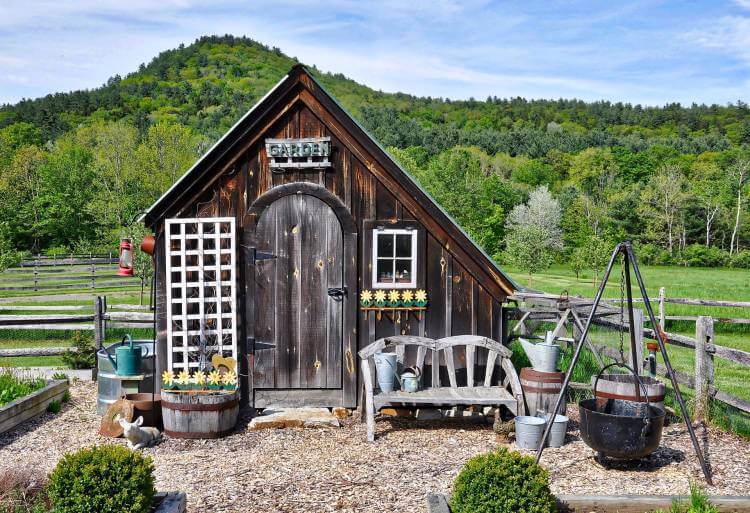 If this was placed under the window of an actual house, do you see how easily it could be used as a ladder?
If this was placed under the window of an actual house, do you see how easily it could be used as a ladder?
Whether you would want such a plant near your house or if it’s even worth the point of having a trellis here is likely a ‘no’, however. Some people do grow roses up their trellis, and yes, roses do have thorns, but in this author’s experience, normally this is one to two spindly roses that are easily avoided. That’s not enough to deter a criminal intent on climbing up to a second story window.
Gravel Under Your Windows is Best
Most landscaping jobs don’t involve grass directly underneath of a window. Many do use concrete or stone slabs underneath, however. This is fine provided there are no easy means of gaining entry to a window nearby.
If a window would require a ladder to gain entry to, and the ground beneath it is stone or concrete, this isn’t much of a deal. If the window is on the ground level and someone can easily walk up on stone or concrete to reach it, then we need to be more concerned.
To better enhance your security for these ground level windows, it would be best to have gravel underneath of them. The reason is noise.
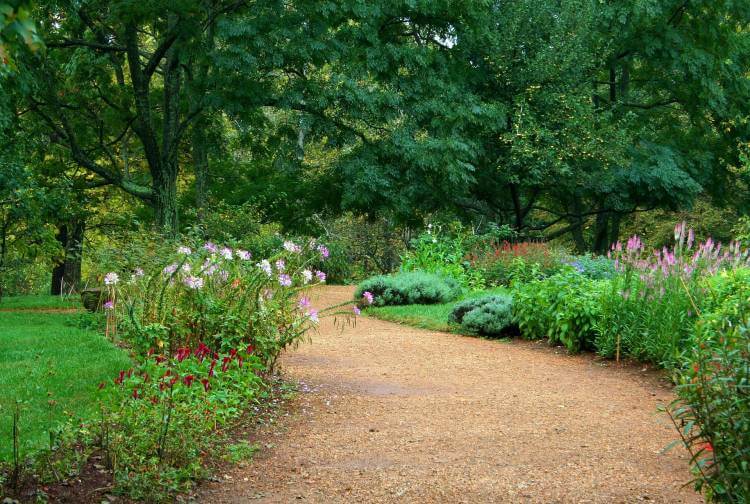 If this path will crunch distinctively with every step you take upon it, why can we not use the same principle to our advantage closer to home?
If this path will crunch distinctively with every step you take upon it, why can we not use the same principle to our advantage closer to home?
A criminal can silently creep up to a window with grass, concrete, or stone on the ground nearby without having to worry about making a peep. Criminals do not want to be detected. Surprise and silence work to their advantage. While you’re unlikely to hear anybody outside if you’re watching TV inside, gravel does make a distinctive crunching noise when it’s being walked on.
If it’s late at night and your home is relatively silent inside, you’ll have a much better chance of hearing a criminal outside of your window should there be gravel underneath. Is this gravel a 100 dB alarm system? No, we must be realistic with what our expectations are here.
But sound does seem to carry farther at night (have you ever tried to keep your spouse from waking up as you get ready for work early in the morning? Every floorboard magically becomes 5x louder than normal.), and this works to your advantage when it comes to hearing Peeping Toms.
Don’t Plant Near Areas You Need Ready Access To
If you’re planting with the intention of boosting your home security, you’re likely filling your landscaping with thorny plants that nobody wants to be near. Why would you want to plant these around your electrical meter, nearby manholes, or your well pump then? When the time comes for maintenance of these vital pieces of your home/neighborhood, you’re only going to be setting somebody good up for injury.
Plants grow and when they do, they spread. Make sure that you’re planting in a way that protects your house, but future you as well.
Don’t Create Hiding Spaces
There are plenty of beautiful landscaping designs out there that serve a function beauty-wise but are abysmal when it comes to offering any level of protection. Just the other day, the author was enjoying a hedge maze in the backyard of a gorgeous 1970s home.
All of it was lovely, but the maze served as a perfect place for any potential criminal to sneak up onto the house without being noticed. Nobody from the street or from the home would have seen anybody engaging in any criminal acts at all.
Privacy is a good thing – many of us rightfully want to be blocked out from the prying eye of the passerby – but if you live in a suburban/urban environment, that may not be practical. In these cases, use your neighbors to your advantage.
By eliminating hiding spots around your yard, you help to ensure that anybody peeking into your windows while you’re not home stands a much better chance of being spotted by your neighbors than they would otherwise.
If you must have a hedge around your home in these types of environments (perhaps it was in place there when you bought the home and removing it would be a nightmare), it’s typically recommended to keep the hedge trimmed to a height of three feet.
This still delineates the border of your property and will keep kids and animals in but allows people passing by to see what is happening close to your home.
Avoid Privacy Fences Unless You “Fortify” It
The thing about a privacy fence is that it works both ways. Nobody can see in, even if you may want them to. Once a bad guy hops over a privacy fence, they can typically operate without any fear of being watched.
There are a few workarounds we to this, though. Let’s say you move into a new-to-you home that already has a 7’ tall privacy fence in the backyard and you’ve already determined you don’t like the idea of your neighbors watching you as you sunbathe around your backyard in-ground pool.
In that case, you may want to keep your privacy fence. To better improve your security in these instances, you could plant a thorny hedge around the perimeter of the privacy fence as well. If a bad guy sees that you have Crown of Thorns or California Fuchsia growing around the inside perimeter of your privacy fence, they’re not going to be able to quickly hop over the top of your fence without launching themselves into a tangle of pain.
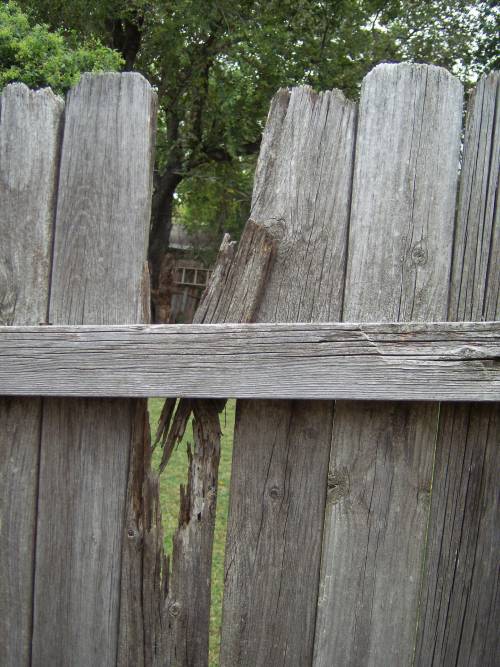 Nobody is launching themselves over this if they’re going to land in a heap of roses.
Nobody is launching themselves over this if they’re going to land in a heap of roses.
Our other option would be to have a big dog that lives in the backyard, but that is a subject outside the scope of landscaping.
What About Trees Close to the House?
Approximately 79% of all break-ins involve either a door or a first-floor window. Statistically, these should be your primary concerns to get the most bang for your buck, security-wise. That isn’t to say that bad guys won’t consider climbing a tree to gain access to an unlocked upper-level window, though.
If you have a grand tree right beside your house that you can’t bear the thought of cutting down but are concerned about criminals using it to gain access to your home but chopping off all branches up to 7’ in height, you help to make it so that most people aren’t going to be able to use it as a ladder.
Unless the bad guy can jump up and perform a muscle up onto a large branch (an incredibly difficult feat), they’ll have zero chance of using your tree as a starting point.
Landscape for Home Security Summary
Home security landscaping is just one aspect of keeping your home safe, and a passive method at that. You need to build your security system as a series of layers. If you are only relying on one thing to keep your home safe, it won’t be. If you plant Crown of Thorns underneath every window and just leave it at that, your house still is susceptible to a break in if you don’t ever lock your front door.
Layers of security are key. Early alert systems, security cameras, locks, signs, firearms, dogs – these are all various layers that can be added to a property to help to make it more secure.
The benefit of landscaping is in denying access to certain areas and, therefore, controlling where people are able to gain access to. You control movement as a result.
If you know where movement has been controlled, you then know where somebody is likely to be. A further benefit is that landscaping works for you 24/7. Despite a power outage, EMP, or lack of ammo, your landscaping will still work to keep your family safe.
That being said, you have to make sure that you know what type of landscaping to choose to begin with, where to plant it, and how to do so in an aesthetically pleasing manner that boosts the value of your home, not cheapens it.

